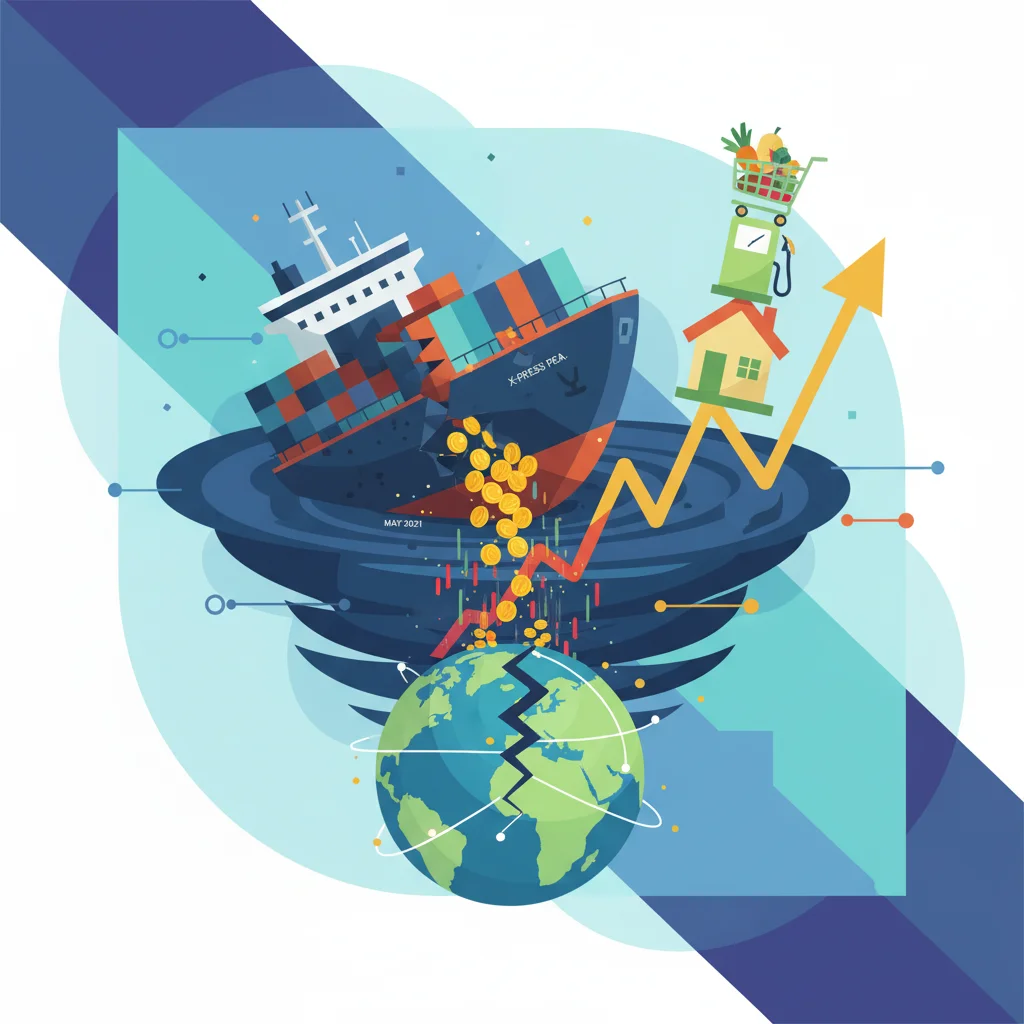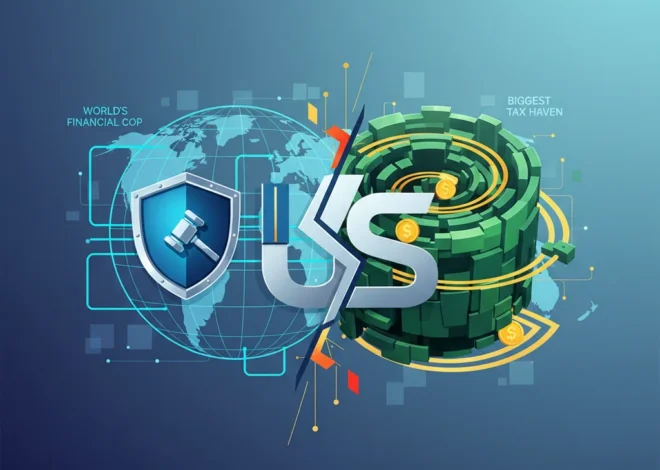
The Billion-Dollar Spill: How a Shipping Disaster Could Inflate Your Cost of Living
In the intricate dance of the global economy, a single event can send shockwaves through supply chains, financial markets, and ultimately, consumer wallets. In May 2021, the container ship X-Press Pearl caught fire and sank off the coast of Sri Lanka, creating one of the worst marine pollution events in history. Now, the financial aftermath of that disaster is threatening to create a new kind of storm—one that could rock the foundations of the maritime insurance industry and have far-reaching economic consequences.
A recent Sri Lankan Supreme Court ruling has imposed a staggering penalty on the ship’s operators, starting at an estimated $1 billion and potentially climbing much higher. In response, the powerful consortium of insurers covering the vessel is now lobbying the Sri Lankan president, warning that failure to intervene could lead to skyrocketing insurance premiums for ships visiting the nation’s ports. This isn’t just a regional dispute; it’s a high-stakes confrontation that pits national sovereignty and environmental justice against the colossal power of global finance. The outcome could set a new precedent for how the world prices environmental risk, with implications for international trade, the stock market, and the global economy.
The Anatomy of a Catastrophe: More Than Just a Sunken Ship
To understand the billion-dollar price tag, one must first grasp the scale of the X-Press Pearl disaster. The vessel was carrying 1,486 containers, many filled with hazardous chemicals, including 25 tonnes of nitric acid. But the most insidious part of its cargo was the 87 containers filled with “nurdles”—tiny plastic pellets used to manufacture plastic products. When the ship sank, it released an estimated 70-75 billion of these pellets into the Indian Ocean.
This “grey snow,” as it was called by locals, blanketed Sri Lanka’s pristine beaches, devastating the local fishing industry and marine ecosystems. Unlike a liquid oil spill, which can be contained and eventually breaks down, these nurdles persist in the environment for centuries, breaking into smaller microplastics and entering the food chain. The cleanup is a monumental, if not impossible, task. The disaster crippled the livelihoods of tens of thousands of people and inflicted long-term damage on the nation’s vital tourism and fishing sectors, all while Sri Lanka was already grappling with a severe economic crisis.
A Landmark Ruling Meets an Immovable Object
In light of this unprecedented environmental damage, the Sri Lankan Supreme Court’s decision to impose a heavy penalty is understandable from a national perspective. The initial fine represents a claim for damages, but the court has left the door open for this figure to increase as the full, long-term impact becomes clearer. This is where the ship’s insurers, a powerful group known as the International Group of P&I Clubs, have drawn a line in the sand.
P&I (Protection and Indemnity) clubs are not typical insurance companies. They are mutual insurance associations, essentially non-profit cooperatives owned by the shipowners they insure. The International Group represents 12 of the world’s largest P&I clubs, collectively insuring around 90% of the world’s ocean-going tonnage. When they speak, the entire shipping and finance world listens.
Their message to Sri Lankan President Ranil Wickremesinghe was stark: the court’s penalty is viewed as excessive and punitive. According to a letter seen by the Financial Times, the group warned that such a precedent could make it prohibitively expensive to insure voyages to Sri Lanka, potentially leading to a dramatic increase in shipping costs or, in a worst-case scenario, carriers avoiding the country’s ports altogether (source). This is a classic case of assessing “sovereign risk”—the danger that a government’s actions will negatively impact an investment—and repricing it in real-time.
The Ripple Effect: From Colombo’s Port to Global Markets
Why should an investor in New York, a finance professional in London, or a business leader in Tokyo care about a court case in Sri Lanka? Because the principles at stake have the potential to ripple across the entire global economic landscape.
1. The Inflationary Pressure on Supply Chains
The most direct impact is on the cost of global trade. Shipping insurance is a fundamental operational cost baked into the price of every product that crosses an ocean. If insurers make a strategic decision to increase premiums for routes to Sri Lanka, or for ships carrying potentially hazardous materials, that cost will not be absorbed by the shipping lines. It will be passed on to their customers—the manufacturers and retailers—and ultimately, to the consumer in the form of higher prices. In an era where the global economy is already battling persistent inflation, any new systemic cost increase is a significant headwind.
2. Recalibrating Risk in the Stock Market
This event forces a new level of risk analysis for investors. The stock market will be watching closely.
- Shipping and Logistics Stocks: Companies in this sector could face higher operating costs and margin pressure.
- Insurance and Reinsurance Stocks: While higher premiums can mean higher revenues, a trend of “mega-fines” increases their potential liabilities and the volatility of their earnings. Investors will have to price in this new legal and environmental risk.
- Chemical and Manufacturing Companies: Firms that produce or transport hazardous materials may face new insurance surcharges or even outright refusal of coverage, impacting their entire business model.
This case is a real-world test for ESG investing frameworks. A company’s environmental risk profile is no longer a theoretical metric; it now has a potential multi-billion-dollar price tag, a fact that will not be lost on savvy investors and trading algorithms.
To illustrate the web of financial interests at play, consider the primary stakeholders and their positions:
| Stakeholder | Primary Interest / Risk | Potential Outcome if Fine is Upheld |
|---|---|---|
| Government of Sri Lanka | Seeking compensation for massive environmental and economic damages; upholding judicial sovereignty. | Receives crucial funds for cleanup and recovery but risks economic isolation if shipping costs soar. |
| P&I Clubs (Insurers) | Limiting liability to what they deem a “reasonable” level; preventing a global precedent for unlimited fines. | Face a significant financial loss; will reprice global maritime risk, leading to higher premiums worldwide. |
| Global Shipping Lines | Maintaining access to key ports like Colombo at predictable, stable insurance costs. | Face drastically higher operating costs for certain routes and cargo types, impacting profitability. |
| Global Consumers & Businesses | Access to goods via reliable and affordable global supply chains. | Experience higher prices on imported goods as increased shipping costs are passed down the value chain. |
| Investors | Stable returns and predictable risk models for investments in shipping, insurance, and manufacturing sectors. | Must re-evaluate corporate risk, especially environmental liability, potentially leading to stock market volatility. |
3. A Catalyst for Financial Technology and Innovation?
While a crisis, this event could also spur innovation in financial technology. The insurance industry, often seen as traditional, is ripe for disruption. This incident highlights the urgent need for better risk modeling. We may see an acceleration in the adoption of:
- Advanced AI and Satellite Analytics: Fintech solutions that can better track vessel movements, cargo conditions, and even weather patterns to predict and prevent accidents.
- Blockchain for Supply Chain Transparency: A secure, immutable ledger could provide a “golden record” of a container’s contents and handling history, ensuring hazardous materials are properly declared and managed. This enhanced transparency could be used by insurers for more accurate premium calculations.
- Parametric Insurance: New insurance products based on predefined triggers (e.g., a spill of a certain size detected by satellite) could automate and expedite payouts, removing the uncertainty of lengthy court battles. This is a frontier where `financial technology` and traditional banking and insurance can converge.
Setting a Precedent for a New Economic Era
The X-Press Pearl case has transcended its origins as an environmental disaster. It is now a pivotal moment for international law, global trade, and finance. If Sri Lanka holds its ground and successfully enforces the massive penalty, it could empower other nations to take a harder line on corporate and environmental accountability. This could fundamentally alter the economics of industries that have long externalized their environmental costs.
Conversely, if the pressure from the insurance lobby succeeds in reducing the penalty or forcing a settlement, it could reinforce the existing power structure, signaling that even in the face of catastrophic damage, the mechanisms of global finance can limit sovereign legal authority. The lobbying efforts by the insurers highlight their concern that this is not a one-off event but a potential trend.
The resolution of this standoff will be a bellwether for the future. It will show us how much financial risk the world is willing to attach to a ton of carbon, a barrel of spilled oil, or a handful of plastic nurdles. For business leaders, investors, and finance professionals, the key takeaway is that environmental liability is no longer a footnote in an annual report; it is a core financial risk with the potential to move markets and reshape the global economy. The waves from the X-Press Pearl are only just beginning to reach our shores.


